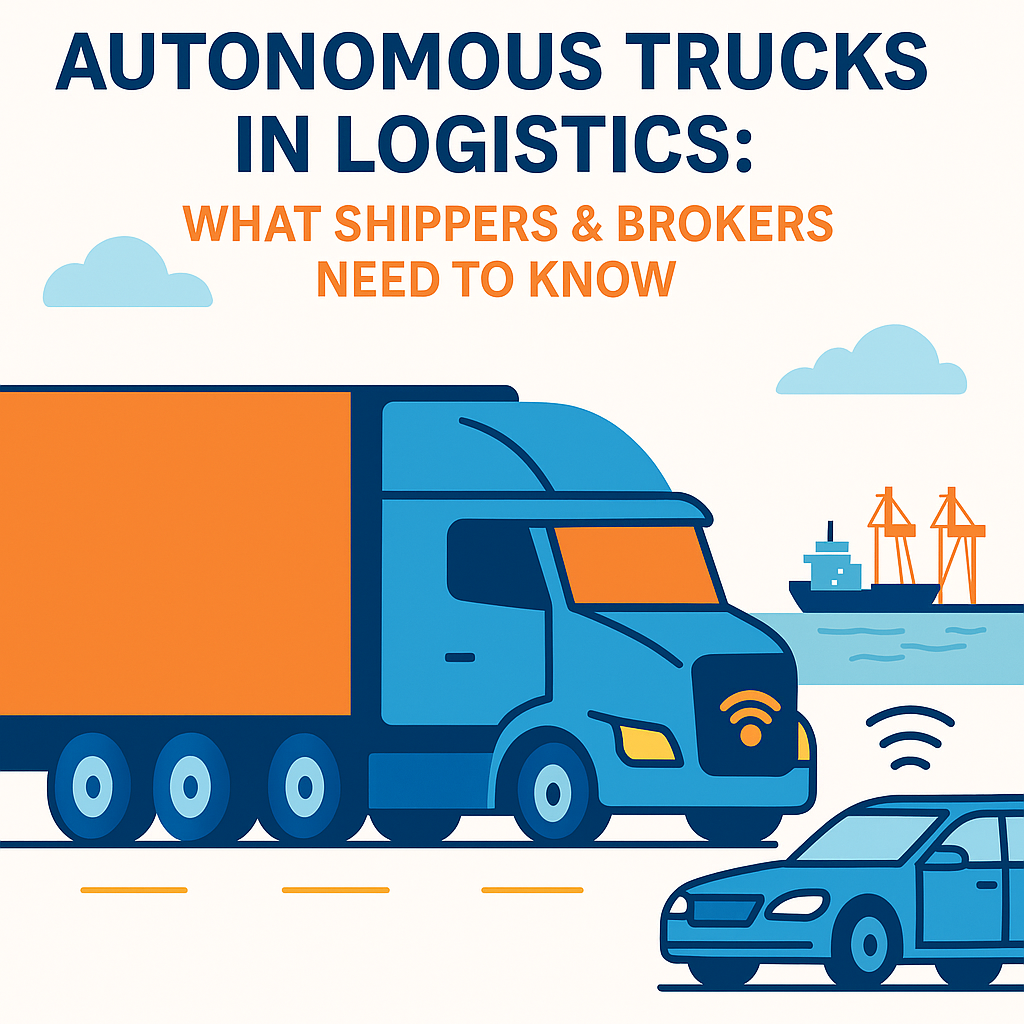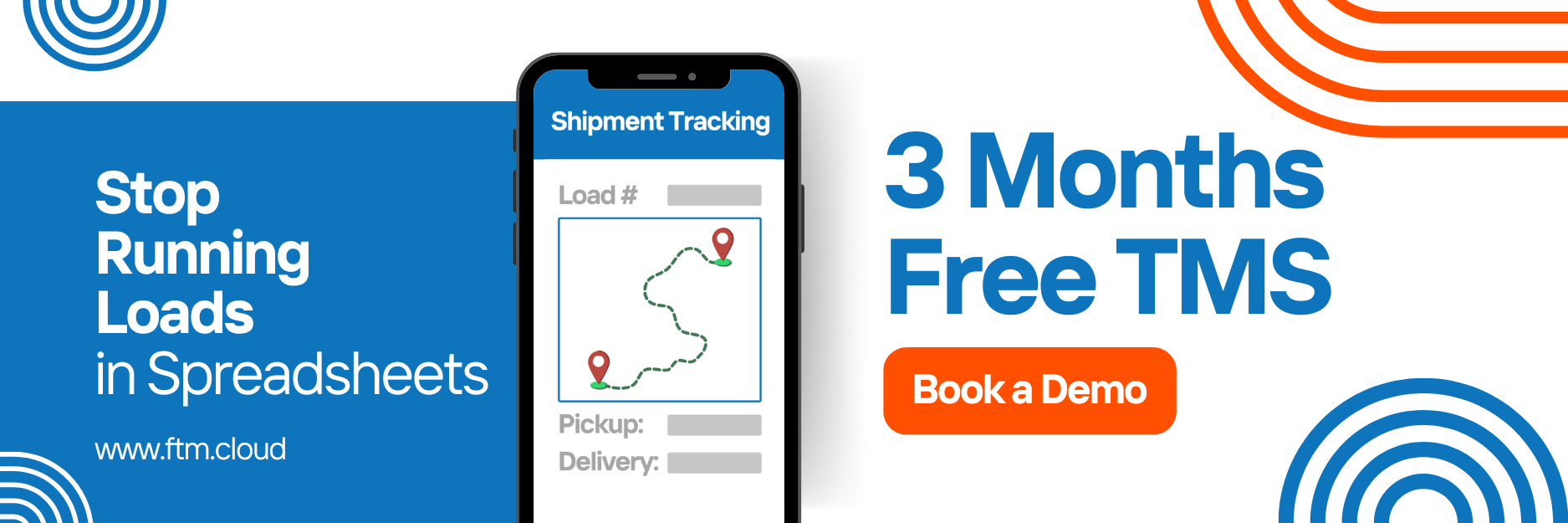Discover how autonomous trucks will reshape logistics for shippers and brokers, from cost savings to liability shifts. Learn the risks and opportunities.
The Future Isn’t Coming, It’s Here
Autonomous trucks appear to make a rapid transition from tech demonstrations to pilot programs hauling freight across key U.S. corridors. In 2024, hundreds of autonomous vehicles logged millions of test miles on highways, and analysts predict that larger-scale commercial deployment of autonomous vehicles on long-haul freight routes will occur in the next 10 years.
For shippers and brokers, this is more than the introduction of new trucks. This is the beginning of a new logistics ecosystem. Autonomous technology delivers promises of faster delivery, new cost structures, and data enriched networks. But it also raises questions of liability, relationships, and the balance of human experience and machine precision.

From Drivers to Drive-Optional: A Shift in Freight Economics
Labor has always been the largest single expense in trucking. The elimination or reduction of the need for drivers could bring rates down for long-haul freight. But it won’t be so easy as “cheap shipping.” Expect:
- Premium pricing on guaranteed autonomous capacity.
- Dynamic lane strategies, where autonomous vehicles dominate certain corridors while human drivers handle complex or local routes.
- New brokerage margins, as rate structures evolve.
For freight transportation providers, this is the time to consider revising their buying behavior. For freight brokers, this will mean developing negotiation skills in what will not be the present spot or contract market.
Beyond Cost: Redefining Service Levels
Consider a truck that does not require any breaks during transit. A linehaul shipment that usually takes three days could now be delivered in two. This reliability and speed could improve OTIF performance and eliminate expensive detention times.
However, there is a trade-off to consider. With fewer people intervening along the way, managing exceptions will become important. If the truck has to shut down for weather or is stuck at a border, who will deal with the interruptions? This is where brokers are still invaluable. They know how to manage the edge cases that machines cannot foresee.
Read more: Reducing Carbon Footprint: Green Dispatching with TMS’s Route Optimization
The Liability Question Nobody Can Ignore
When an autonomous truck is in an accident, who is responsible? Is it the carrier, the shipper who booked the load, the broker who arranged it, or the software developer?
As of 2025, regulations are still patchwork. Brokers may need to rethink contracts, while shippers will face pressure from customers to ensure safety and compliance. Clear documentation and risk-sharing clauses will become as important as pricing.
Data as the New Fuel
Autonomous fleets will create a tidal wave of data; sensor readings, predictive ETAs, exception alerts, and maintenance logs are the new reality. For shippers, this means unparalleled visibility. For brokers, this means developing systems capable of consuming, analyzing, and acting on this level of data in real time.
Those who can integrate this stream into a smart TMS will unlock new efficiencies:
- Route optimization that cuts empty miles.
- Sustainability tracking for ESG reporting.
- Proactive alerting that prevents small delays from becoming big problems.
Read more: Top Integrations to Improve Real-Time Shipment Visibility
The Human Side: What Doesn’t Change
Self-driving trucks won’t replace men; they’ll simply change what man does. Last mile, local pickup, city route, and handling exceptions, will still be done by humans.
In the end, brokers will not differentiate themselves by trucks, but by trust. Shippers will still look for partners who can manage relationships through disruption, and provide value that only an experienced person can provide.
Sustainability and Brand Advantage
Autonomous trucks will accelerate green logistics. Many pilots are paired with electric drivetrains and advanced routing, reducing emissions per mile. Shippers with aggressive sustainability goals will prioritize these lanes, and brokers who can prove carbon savings will stand out in RFPs.
Read more: Why Are Truck Drivers Quitting? How Fleets Can Reduce Turnover in 2025
Practical Steps: Preparing Today
Instead of waiting, forward-thinking shippers and brokers are already taking action:
| Action Step | Impact |
| Audit long-haul lanes | Identify corridors likely to adopt autonomy first. |
| Update contracts | Address liability and compliance before pilots scale. |
| Invest in TMS upgrades | Ensure your system can integrate autonomous fleet data. |
| Diversify carrier base | Build early ties with autonomy-ready providers. |
| Train teams for exceptions | Keep human problem-solving sharp where machines fall short. |
Early Movers Will Lead
Self-driving trucks are more than just an innovation, they’re a watershed moment. Costs are changing, service expectations are increasing, and the line between man and machine is disappearing. Shippers and brokers need to do one of two things: embrace and adapt early to be on the leading edge or wait and risk the chance of being left behind.
At FTM, we’re preparing for this future by enabling integrations with emerging carrier technologies, empowering exception management, and supporting smarter dispatching. If you’re ready to future-proof your operation, the time to act is now.
Book your free demo today and take the first step toward a driver-optional future.

